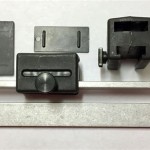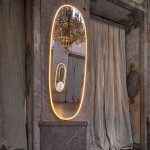Antique Dresser Mirror On Stand: A Timeless Reflection
An antique dresser mirror on a stand, also known as a cheval mirror or dressing glass, is a freestanding looking glass, typically full-length, that provides a reflective surface for dressing and grooming. More than just a functional object, it represents a tangible link to the past, embodying the craftsmanship, artistic styles, and social customs of bygone eras. These mirrors, constructed with various materials and ornamentation, have been a staple in bedrooms and dressing rooms for centuries, evolving from simple designs to elaborate artistic expressions.
The value and desirability of antique dresser mirrors on stands stem from several factors, including their age, rarity, condition, provenance, construction materials, and the artistic merit of their design. Collectors and enthusiasts appreciate these mirrors not only for their practical use but also for their aesthetic appeal and historical significance. A meticulously preserved mirror crafted by a renowned artisan can fetch a considerable price at auction, making them a worthwhile investment for discerning collectors.
Understanding the Historical Context
The history of the dresser mirror on a stand can be traced back to the 17th century, with earlier examples often featuring simple tilting mechanisms and wooden frames. As advancements in glassmaking technology occurred, larger, clearer mirrors became more accessible, leading to increased popularity and more elaborate designs. The 18th and 19th centuries witnessed a proliferation of styles, reflecting the prevailing aesthetic trends of the time, such as the Rococo, Neoclassical, and Victorian periods. These periods saw the use of fine hardwoods like mahogany, walnut, and rosewood, often adorned with intricate carvings, inlays, and gilding.
During the Victorian era, mass production techniques also influenced the availability of dresser mirrors on stands. While handcrafted examples remained highly prized, more affordable versions, made from lesser-quality materials and utilizing machine-made components, became common in middle-class homes. Understanding the historical context of a particular mirror can provide valuable insights into its origins, construction, and potential value.
Identifying the period in which a dresser mirror was made requires careful examination of its design features, materials, and construction techniques. For instance, a mirror with cabriole legs, C-scrolls, and asymmetrical ornamentation is likely from the Rococo period, while a mirror with straight lines, geometric patterns, and restrained decoration is more indicative of the Neoclassical style. Victorian mirrors often feature elaborate carvings, dark finishes, and ornate details, reflecting the era's emphasis on opulence and embellishment.
Key Elements of Construction and Materials
The construction and materials used in an antique dresser mirror on a stand are crucial factors in determining its quality, durability, and value. The frame is typically constructed from wood, with hardwoods like mahogany, walnut, and rosewood being the most desirable due to their strength, beauty, and resistance to decay. The quality of the joinery, carving, and finish are also important considerations.
The mirror itself is another vital component. Antique mirrors are often made with a thicker glass than modern mirrors, and they may exhibit subtle imperfections that add to their character. Early mirrors were typically made using a process involving a thin layer of silver amalgam applied to the back of the glass. This process often resulted in a slightly distorted reflection, which is a characteristic feature of many antique mirrors. Looking for signs of desilvering or "foxing," the dark spots or blotches on the mirror's surface caused by the deterioration of the silver backing, can help determine a mirror's age and authenticity.
The stand, which provides support and stability for the mirror, is another important aspect of the overall construction. The design of the stand can vary significantly, ranging from simple tripod bases to elaborate scrolled legs and platform bases. The quality of the stand's construction is essential for ensuring that the mirror is stable and secure.
Hardware, such as screws, hinges, and catches, can also provide clues about a mirror's age and origin. Hand-forged nails and screws are often found in older mirrors, while machine-made hardware is more common in later examples. Examining these details can help to differentiate between original components and later replacements.
Assessing Condition and Authenticity
Evaluating the condition and authenticity of an antique dresser mirror on a stand requires a meticulous inspection. The condition of the frame, mirror glass, and stand should be carefully assessed for any signs of damage, wear, or restoration. Cracks, chips, scratches, and warping are common issues that can affect a mirror's value. However, minor imperfections are often considered acceptable, as they are a natural part of the aging process.
Evidence of past repairs or restorations should be noted. While some repairs may be necessary to preserve the mirror's structural integrity, excessive or poorly executed restorations can detract from its value. It is important to determine whether any replacement parts are original to the mirror. Modern replacement parts, such as screws or hardware, should be identified and their impact on the mirror's overall value assessed.
Determining the authenticity of an antique dresser mirror on a stand can be challenging, as reproductions and fakes are prevalent in the market. Thorough research, comparison with known examples, and consultation with experts are essential steps in the authentication process. Key indicators of authenticity include the quality of the materials and craftsmanship, the presence of age-related wear and patina, and the consistency of the design and construction with the purported period of origin. Examining the mirror under ultraviolet (UV) light can sometimes reveal evidence of later additions or alterations, as different materials may fluoresce differently under UV light.
Checking for maker's marks, labels, or stamps can also provide valuable information about a mirror's origin and authenticity. These marks may be located on the frame, back panel, or base of the stand. However, the absence of a maker's mark does not necessarily indicate that a mirror is not authentic, as many antique mirrors were not marked.
Provenance, the documented history of ownership and origin of an object, can significantly enhance its value and authenticity. A mirror with a well-documented provenance, tracing its ownership back to its original maker or owner, is likely to be more desirable to collectors than a mirror with an unknown history. Documents such as bills of sale, estate inventories, and historical photographs can provide valuable evidence of provenance.
In addition to these factors, the overall aesthetic appeal and visual impact of an antique dresser mirror on a stand should be considered. A mirror that is well-proportioned, beautifully designed, and in good condition is likely to be more desirable to collectors and enthusiasts than a mirror that is poorly designed or in poor condition.
Preserving antique dresser mirrors on stands requires careful handling and maintenance. They should be stored in a stable environment with moderate temperature and humidity levels to prevent damage to the wood and mirror glass. Direct sunlight should be avoided, as it can cause fading and discoloration. Regular dusting with a soft cloth can help to keep the mirror clean and prevent the buildup of dirt and grime. Avoid using harsh chemicals or abrasive cleaners, as they can damage the finish. Professional conservation services should be sought for any significant repairs or restorations.

Vintage Dressing Mirror With Drawer Shaving Stand Mens

Heavy Vintage Brass Ornate Dresser Mirror With Stand

Antique English Ornate Gilt Broe Easel Stand Dresser Mirror

19th Century Victorian Quartersawn Oak Mirrored Dresser Chest Vanity Wash Stand At 1stdibs Antique With Mirror Table

Antique Painted Blue Oak Tall Wash Stand W Mirror Dresser Cabinet Storage

Antique Dresser Top Shaving Mirror Stand W Drawer Vanity Mahogany Dressing Shave Cuartos Principales
Antique American Style Oak Dresser With Mirror Stand Vintage Supply East La Los Angeles Ca

Vintage Chippendale Style Dresser Top Shaving Mirror Stand Vanity Jewelry Box Chairish

Vintage Chippendale Style Dresser Top Shaving Mirror Stand Vanity Jewelry Box Chairish

Heavy Vintage Brass Ornate Dresser Mirror With Stand








